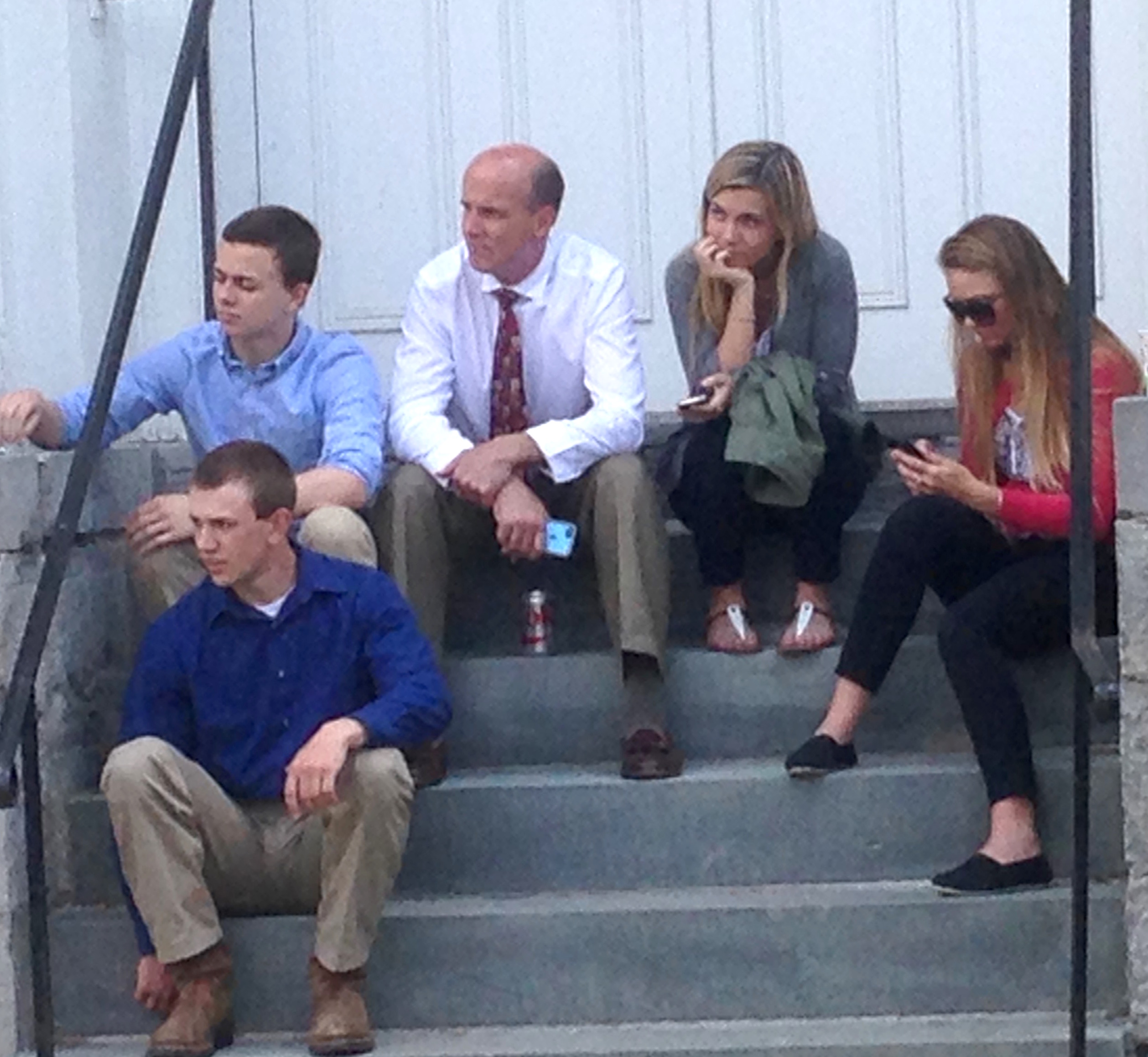
Calvin Harris and his four children take a break outside of the courthouse as the jury continues its third day of deliberations in Schoharie County. (Photo by Wendy Post)
Now into their third day of deliberations, or approximately 18 hours, the jury in the Calvin Harris second-degree murder trial appears patient as they carefully study and then question the evidence presented during their deliberations.
At least that is how defense attorneys felt on Monday, as the day drew near a close and the jury remained in their deliberations. Calvin Harris’ fate is in their hands as they decide whether Calvin Harris murdered his estranged wife, as the prosecution claims, or whether he is innocent, which the defense says the jury must decide.
With family court taking place the same day at the Schoharie County Courthouse, Judge George R. Bartlett III quickly instructed the jury on Monday morning back into deliberations, and then hurried in and out of the courtroom as the jury sent requests, in the form of a note, to the judge in this matter.
The first request came at 10:20 a.m., when the jury requested from the judge to be read the part of the law that describes reasonable doubt, and circumstantial and direct evidence.
As for reasonable doubt, the judge instructed the jury that the people’s case must be proved beyond doubt, and can’t be based on the summation that the defendant is probably guilty.
“Evidence must convince beyond a reasonable doubt,” said Judge Bartlett.
Direct evidence, the judge explained, is evidence of a fact, based on a person’s statement, etc.
On the other hand, he explained, a person can be found guilty if that evidence gives rise to an inference of guilt, when the facts have been proven, and what inferences, if any, can be derived from those facts.
The jury also requested an easel, paper and markers at approximately 11 a.m., and then worked through their lunch.
The jury took a small break from 1:40 to 2 p.m., and then headed back into deliberations.
By 3:30 p.m., the jury sent in another note, this time requesting a read-back of Investigator Michael Myers’ interview with Calvin Harris at the family’s dealership on Sept. 12, 2001, and another interview between the two on Sept. 14, 2001.
The judge, upon this request, decided to dismiss the jury while this testimony was being pulled from the court’s record. But prior to the dismissal, the jury also asked for a read-back of testimony from Pamela (Brock) Barnes – a former nanny for the Harris’.
The jury will be read these portions of testimony at 9:15 a.m. on Tuesday, and will then continue their deliberations.
Calvin Harris, age 53 of Spencer, N.Y., is on trial for a third time for the alleged murder of his wife, Michele Harris, who disappeared in September of 2001. Two previous convictions were overturned, and this new trial ordered in Schoharie County. Neither her body nor a weapon has ever been found.
The prosecution maintains that Calvin Harris murdered Michele Harris on Sept. 11, 2001, and has based this circumstantial case on blood spatter found inside the Harris’ home, as well as motive and behavior.
The defense claims their client is innocent, and that the prosecutors failed to look at other potential suspects – mainly Stacy Stewart. The defense conducted an investigation of their own, but a third party culpability ruling prevented the defense from presenting what they considered their most damning evidence to the jury.


